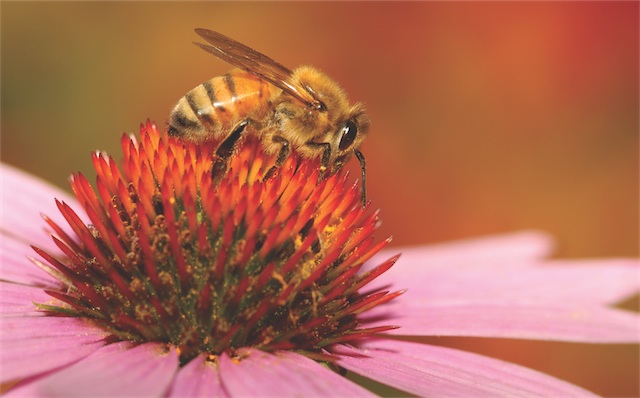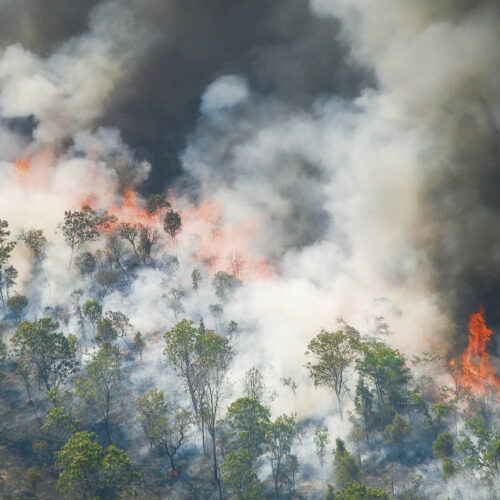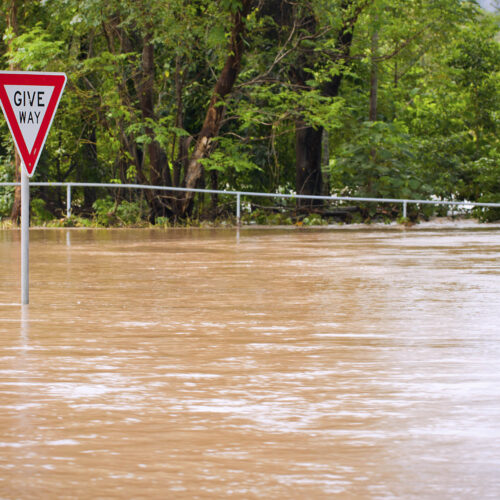A dying buzz
2014-10-22T00:41:30+11:00
Climate disruption and insecticides known as neonics are proving a deadly combination for bees, writes DR REESE HALTER.
For the past decade and a half, climate disruption has battered the Australian continent. Bushfires, prolonged regional droughts, extreme heatwaves and epic flooding are occurring more often and eclipsing records more frequently. And for the first time in the history of the nation, climate disruption is killing billions of honeybees and unknown numbers of the 1600 native bee species, threatening Australia’s food security.
Scientists from Flinders University(1), reported that not only are bees essential for food security, they play a leading role as a key indicator of massive climate disruption blanketing Earth. Honeybees in Australia generate about $6 billion per annum, pollinating almost 70 per cent of food crops, including the burgeoning almond industry that produces over $331 million annually. It requires at least 180,000 hives or about 9 billion healthy honeybees and copious amounts of water to reach these figures. Bees also support $150 million in honey sales and potent medicines for pain relief. However, in a warming world, both bees and water are becoming scarcer.
Almost 700 species of Eucalyptus produce fewer flowers (or not at all) during heatwaves. Those eucalypt flowers are vital for the health and wellbeing for all wild Australian bees as well as the domesticated honeybees. In a normal year Eucalyptus is a major nectar contributor toward 30,000 metric tons of honey, or enough to feed 23.4 million Australians annually. Last summer, plants responded to the stifling heatwaves across the Australian continent by substantially lowering nectar production. Bees require nectar – their only food source – to make honey.
Honeybees also had to contend with another crisis this past summer as climate disruption had their colonies operating in an emergency mode. Bees store their honey in honeycomb cells made of beeswax, which melted because daytime temperatures regularly exceeded 35°C. Instead of searching far and wide for flowers to harvest nectar to turn into honey or collect protein-rich pollen to feed their larvae or performing their role as pollinators, the honeybees spent the lion’s share of each day of last summer searching exclusively for fresh water to cool down their hives. Moreover, commercial beekeepers were forced to feed bees corn syrup in an attemp to keep their hives alive. “Feeding bees in the middle of the summer is just about unheard of,” says Ken Gell of the Central Victorian Apiarist Group. The vicious heatwaves last summer not only cost beekeepers millions of dollars in feeding costs, but also 30 per cent of the commercial bees were wiped out. Honey production across the nation was the lowest ever recorded, and consequently none will be exported this year.
But that’s not all that is troubling bees. The burgeoning worldwide use of insecticides – roughly two billion kilograms annually – is now being highlighted as a major contributing factor to their decline. An estimated 500 billion honeybees have been lost worldwide since 2006. One-third of insecticides are neonicotinoids (neonics), a neuro-insecticide fashioned after nicotine, which poison nerves and prevent acetylcholine from enabling neurons to communicate with each other and muscle tissue. They are a systemic insecticide that penetrates the plant.New research(2) from Harvard University and elsewhere shows that, in combination with climate disruption, neonics are causing bees to die faster than ever before.
Dutch toxicologist Dr Henk Tennekes(3) has detailed the deleterious residual knock-on effects of using neonics in Western Europe, including contaminating fresh waterways, killing trillions of soil organisms and rapidly diminishing biodiversity from meadow birds to raptors like goshawks. Manufacturers say the pesticides are not harming bees or other species. BBC News reported Dr Julian Little from Bayer, one of the manufacturers of neonics, saying: “There is very little credible evidence that these things are causing untoward damage because we would have seen them over 20 years of use.” Nevertheless, Europe currently has a two-year moratorium in place preventing the use of neonics on flowering crops.Researchers from the University of Sussex, in the UK,(4) recently concluded that to save bees globally, neonics must be quickly phased out. One immediate alternative to neonics is the Indian neem tree and its potent natural chemical, azadirachtin. Extracts of neem are effective against at least 200 different insect species but are harmless to pollinators like bees, butterflies, moths, beetles and bats as well as beneficial insects, warm-blooded animals and birds.
In the US, the White House has set up a task force to tackle the massive decline of honeybees. Let’s hope action comes quickly to help save our bees from the dual threats of a warming world and insecticides.
• Dr Reese Halter is a broadcaster, biologist, educator and author of The Incomparable Honeybee & The Economics of Pollination.
References:
- phys.org/news/2014-05-trio-bee-populations-key-food.html
- dailymail.co.uk/sciencetech/article-2628372
- disasterinthemaking.com
- bbc.com/news/science-environment-27980344






